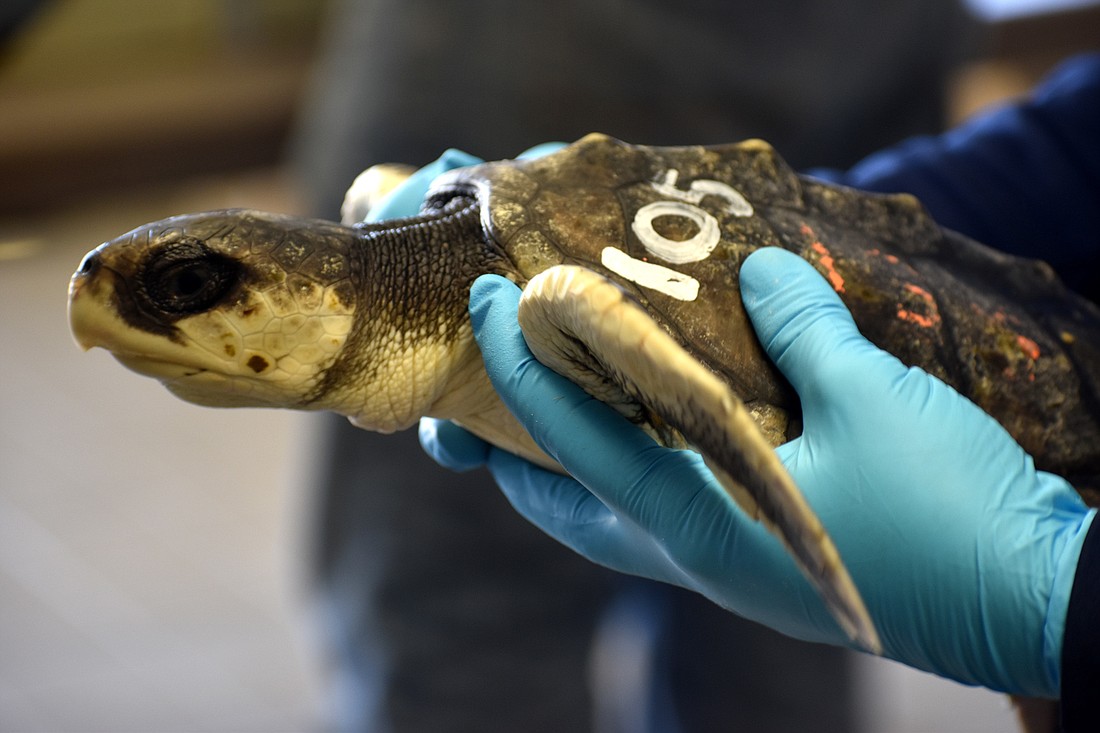- November 17, 2024
-
-
Loading

Loading

Mote Marine Laboratory’s Sea Turtle Rehabilitation Hospital received some holiday visitors Dec. 8.
Nine endangered Kemp’s ridley sea turtles and one threatened green sea turtle arrived at Mote Friday evening in Chiquita banana boxes after flying on a private jet from the New England Aquarium (NEAQ) in Quincy, Mass.
Mote usually takes in turtles from NEAQ this time of year, as they there suffer from exposure to the cold.
Mote, along with Clearwater Marine Aquarium, Florida Aquarium and SeaWorld Orlando, are helping care for 46-cold-stunned turtles, a statement from Mote said.
The 10 new turtles at Mote are split into pairs and share a tank, but a net divider separates them because Kemp’s ridley turtles are solitary animals.
Each turtle was given a holiday-themed name by Mote staff. Sugar and Plum, Snicker and Doodle, Ginger and Snap, Candy and Cane, Tinsel and Dreidel (the lone green sea turtle), are all being cared for.
Mote is evaluating the health of the turtles, which had been in NEAQ’s care for a month when they made their journey to Mote.
When turtles are exposed to cold temperatures, their immune systems are compromised, Lynne Byrd, Mote's rehabilitation and medical care coordinator said. NEAQ has room to care for 80 turtles but gets hundreds a day, so that’s where Mote and other Florida aquariums come in.
“They bring them down here for space and triage,” Byrd said.
Each turtle has its blood tested and then heads to radiography for imaging. When the turtles are blood tested, scientists can determine several health issues, such as if a turtle is dehydrated, anemic or shows signs of infection.
Doodle, who shares a tank with Snicker, is the most critical, Byrd said, because he is a little “floaty” and won’t eat. He’s being treated with fluids and antibiotics.
The amount of time they’ll stay at Mote varies, Byrd said, but the average is around six months. Each will be released on the east coast of Florida, most likely in the St. Augustine area.
To be released, turtles need to have three good flippers and one good eye, Byrd said.
Sometimes, the turtles can freeze on the northern beaches in New England, and birds will peck their eyes. However, Byrd learned that doesn’t mean their vision is a lost cause. Byrd recalled a turtle that once regrew its eyelids.
“We don’t give up on anybody,” Byrd said.